Wall-to-Wall, Floor-to-Ceiling Drapery: A Bold Choice
By Ralene Simmons
There’s something striking about drapery that runs from floor-to-ceiling and wall-to-wall. This technique can be layered underneath with shades, but can also stand alone as an architectural statement. A statement like this feels intentional—streamlined, elegant, and bold in its simplicity. This design choice allows the drapery to feel like an architectural feature while also creating a background to highlight other features and colors in the room.
A great example of the texture and the movement of fabric can be found in this sweet little condominium sunroom.


The simplicity of a single layer can also feel very luxurious, simply through its restraint. And in daily life, this choice is easy to operate—especially if paired with motorization—making it as practical as it is stylish. The result is a clean, textural layer.
Notice in this next example that there is a soft off-white color in the drapery and shades, which are beautifully in balance with the color scheme in the room, yet don’t feel stark or boring at all.

So, when would you choose wall to wall, floor to floor drapery?
-
When you’re going for a streamlined style – The single layer of fabric is quite sophisticated and uncluttered looking, which will instantly elevate the room.
-
When you want to expand the feeling of the room – Extending fabric wall-to-wall and floor-to-ceiling emphasizes the proportions of the space, making ceilings feel taller and windows wider.
-
When the fabric envelopes the design – With your chosen textile - whether it’s a crisp linen, rich velvet, or soft cotton or wool - the windows will always feel part of the design and envelop you within your home. This expanse of fabric also softens rooms that have tall ceilings or hard floors.
When would you not want to use this feature?
-
Limited Light Control – A lighter, single layer of fabric acts more like a filter to the daylight, rather than a block; If you don’t choose to layer, then the drapes are simply open or closed.
-
Privacy Considerations – Depending on fabric weight, privacy may be reduced.
-
Potential Heaviness – Darker or heavier fabrics across an entire wall can feel overwhelming in smaller spaces if not carefully balanced with lighter furnishings or finishes.
Hardware
Hardware also plays an important role in this look. In the first example I opted for a ceiling track that completely disappears so the detail of the pleats create a frame or border around the ceiling.
In the second example, a thin gold curtain rod is more visible and complements the overall design.

Pro Tip: I often say that drapery finishes a room. Equally important is a custom curtain rod, which enables you to select the exact length you need, and avoid rings getting ‘stuck’ as they skip over an adjustable rod.
Choosing wall-to-wall, floor-to-ceiling drapery without layering is a design decision that makes a statement: it’s refined, tailored, and confident. For homeowners who value elegance without extra complication, this approach offers a striking alternative to traditional layered window treatments.
*Photography:
Emily Keeney Photography - Sunroom images
Ralene Simmons - Dining Room image



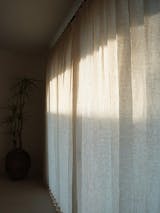
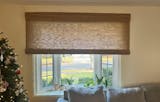

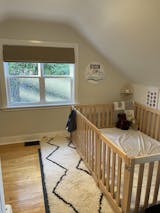

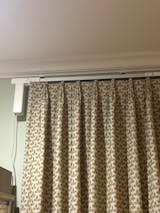
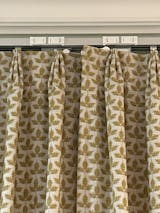
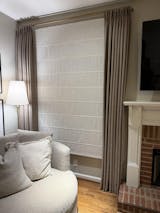

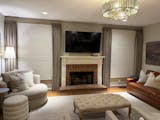


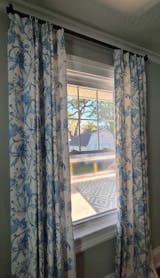
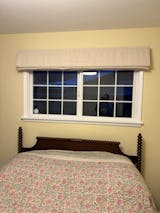
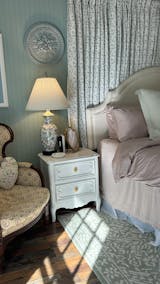
Leave a comment